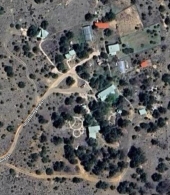I'm really, really glad to hear that other people are trying to do this (and succeeding)!
I'm also very impressed, Jay - 10 000 trees is a lot of dedication. Thanks for sharing your experience- it gave me a lot of ideas (and hope). I like the idea of pruning for light and growth, and using the existing trees to shelter seedlings.
Thank you Daron - I'd never heard of or thought of girdling a tree. It's great to have a technique for thinning that doesn't require me to lug around a chainsaw. You're right, I will need to keep finding and walking in natural forests in the area. I've only ever lived in boreal forests, and they have very different species and structures.
I am quite hesitant about logging - my parent's land (regrowth boreal forest on shallow bedrock) was selectively cut about 8 years ago. We discovered that in shallow soil, the trees hold each other up with their branches. If you suddenly remove 3/4 of them, leaving only the "best" as seed trees, most of the remaining trees will fall down. Then it takes another 5 or 6 years for them to stop falling for long enough to actually keep a trail clear. I think the trees on this site have deeper roots but I don't intend to test that theory. A few at a time seems more reasonable and manageable.
I realize this will take me time; probably years, more likely decades since I will only work at it occasionally. But ample time is one of the advantages of being young

When I get impatient, I can remind myself that 40 years from now, hopefully, the forest will look a lot different- with deciduous and coniferous trees of mixed ages and types interspersed with some majestic 80 year old red pine and white spruce planted by my grandpa.
One of the things I am thinking about HK for is one of the open clearings that already exist. It's probably the easiest place to put in light loving trees, if I can get some soil established to feed them. I do want to keep some of the natural clearings - I think of them as the ultimate low maintenance lawn.
Some of my work will be getting trees established to give me volunteer trees. I've been thinking of clearing, say, a 10' radius circle and replanting it with one or two hardwood tree seedlings. Then moving to another area and doing the same thing. In a few years the trees will grow, and some seeds or roots will be able to migrate and colonize new areas adjacent to my circles (especially if I've thinned out the trees in between in the meantime).
Also, so far I don't appear to be allergic to poison ivy. But my family and friends are, so I should probably deal with it before I ask them to help me.
- Catie


 2
2




 3
3




 1
1




 1
1



















 When I get impatient, I can remind myself that 40 years from now, hopefully, the forest will look a lot different- with deciduous and coniferous trees of mixed ages and types interspersed with some majestic 80 year old red pine and white spruce planted by my grandpa.
When I get impatient, I can remind myself that 40 years from now, hopefully, the forest will look a lot different- with deciduous and coniferous trees of mixed ages and types interspersed with some majestic 80 year old red pine and white spruce planted by my grandpa.






















